Bianchi caused quite a stir among their fanbase with the launch of the 2024 Impulso gravel bike last year.
Unveiled at the tail end of 2023, the new Impulso features a completely revamped design with Bianchi targeting the gravel racing audience.
You won't find baggage mounting points or suspension gimmicks here: the Impulso 2024 is intended as a thoroughbred racer, designed to go from A-B as fast as possible.
It looks ideal, on paper, for the growing calendar of gravel races - and the fact it's easier on the eye than some of Bianchi's wilder designs of late doesn't hurt either.
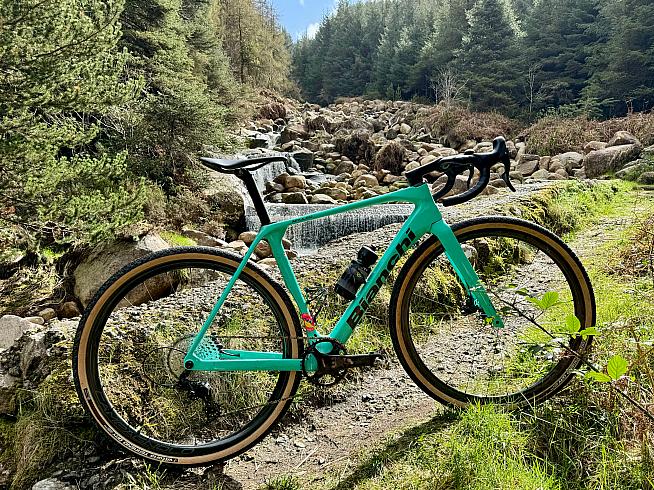
The Impulso comes in a choice of three models: the top tier Reparto Corse, the Pro, and the Comp. All three share the same frame shapes, the same fork and carbon seat post, with the Reparto Corse using a more rarefied high-modulus carbon layup for the frame.
The three models are otherwise differentiated by the groupset, wheels and finishing kit; the RC gets a lovely integrated cockpit, SRAM Force AXS 2x12 groupset and Reparto Corse 43 carbon wheels; the Pro gets Velomann Terbium carbon wheels and Shimano GRX 820 2x12 groupset, while the Comp is equipped with Fulcrum Rapid Red 900 wheels and Shimano GRX 610 groupset.
Both the Pro and the Comp are fitted with Bianchi's in-house Velomann branded saddle, with alloy bars and stem. All three models feature fully internal cable routing.
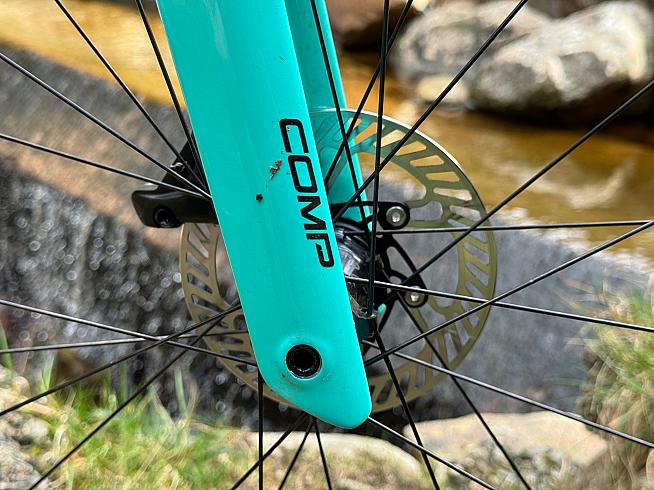
Bianchi say the new Impulso can clear up to 700x42 tyres, while claimed weights for a size medium in the stock bikes are 8.1kg for the Reparto Corse and 8.9kg for the Pro with no weight provided for the Comp.
I didn't exactly need a new bike, but as a Bianchi fan I couldn't resist checking out how their latest gravel offering stacked up. And so it came to pass that one day in February, an enormous box landed on the front doorstep.
It was the first time I'd taken delivery of a bike with fully internal cables; maybe this is how bikes ship these days, but to avoid disconnecting the brakes and gear cables the retailer had taken the resourceful step of splicing together two full sized bike boxes. Inside was neatly packed the fully assembled Impulso.
It was pretty impressive, but a beast of a box to lug up the stairs. On the plus side, the bike arriving fully assembled meant I just needed to attach pedals and it was ready to ride straight out of the box.
First I took the chance to weigh the complete bike, to fill in the missing info in Bianchi's launch notes: it came in at 9.3kg (size M). Not too bad. But I had ideas to make it lighter.
My plan was to replace the stock groupset with Campagnolo Ekar 1x13. That's nothing against Shimano, which I know will work perfectly. I'm not even one of those purists who demand that an Italian bike must have Italian components.
But I have been using Ekar for a couple of years and we're in a committed relationship. The gear range is excellent, braking is superb, Campagnolo's ergonomics are in my opinion unmatched; also it's light, the build quality is top-notch and it looks great.
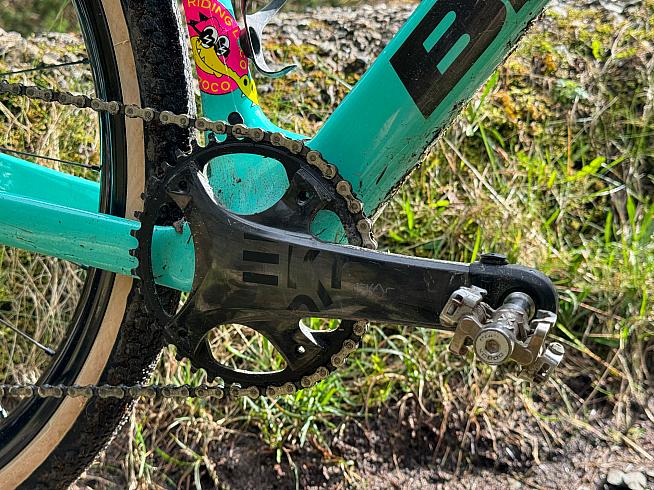
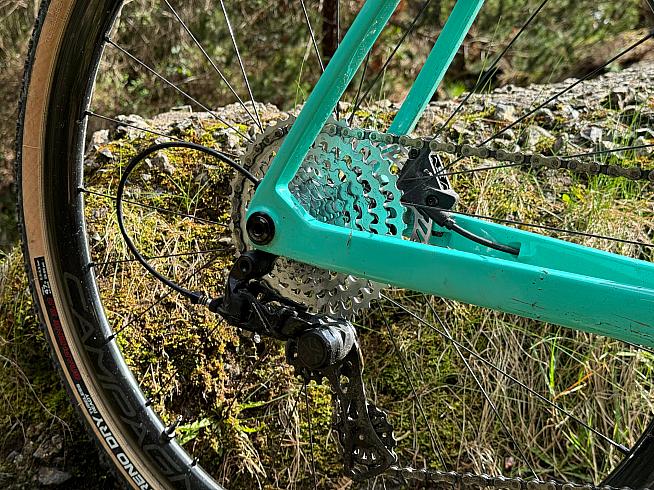
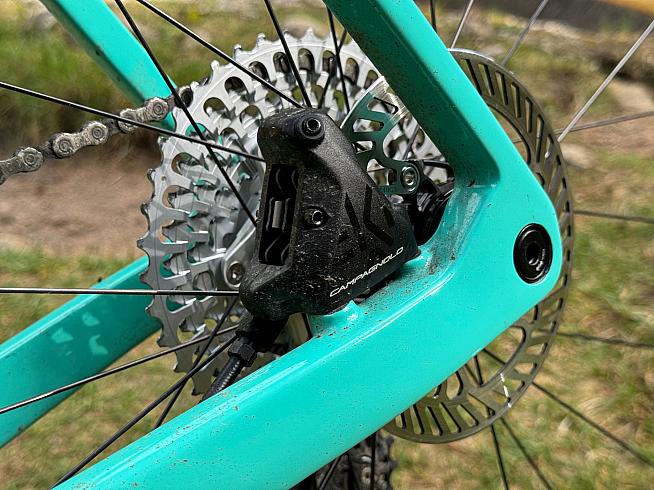
- Impulso Comp frame (size M, celeste): 1161g
- Fork: 416g
- Seatpost: 168g
- Handlebars (42cm): 392g
- Stem (100mm): 221g
- Saddle: 231g
- Front derailleur mount: 15g
- Steerer expander: 29g
- Front thru axle: 31g
- Rear thru axle: 41g
- Axle lever: 21g
- Seatpost clamp: 27g
- Wheelset: 1789g
- Inner tubes: 165g each
As you can see there's an easy 200g to be saved immediately, simply by throwing away the inner tubes and setting the wheels up tubeless.
Apart from that, the stock components on the Impulso are decent. The carbon seatpost in particular uses a clever one-bolt system to secure and adjust the saddle. On first impressions I really like it - just as well, since the proprietary D-shape profile means you're stuck with it.
The saddle, too, is a quality bit of kit; I found it comfortable, but a little wide for my preference so I swapped it out for my own. I didn't ride the Fulcrum wheels. They can be set up tubeless or with inner tubes: the 22mm inner width of the rim is on the narrow side by current standards, but perfectly adequate for up to 42mm tyres (I've run wider tyres on narrower rims with no issues).
Only the Velomann stem and bars let the side down slightly: at a combined weight of over 600g they are ripe for swapping over to a carbon alternative, which should not only be much lighter but also spare your arms a little trail chatter.
The size M Impulso comes with 42cm bars as standard. That's exactly what you'd expect but it's a bit wider than I would typically use even on gravel, so I searched around and found a set of FSA K-Wing AGX in 40cm to replace them with.
I found conflicting advice on whether internally routed mechanical gear shifting would work with these bars, but it turns out they are perfectly compatible. The shape is interesting, rising at the tops and with a bit of foward sweep and flare. The curves are at odds with the brutalist stem, but they're light (212g) and first impressions are good.

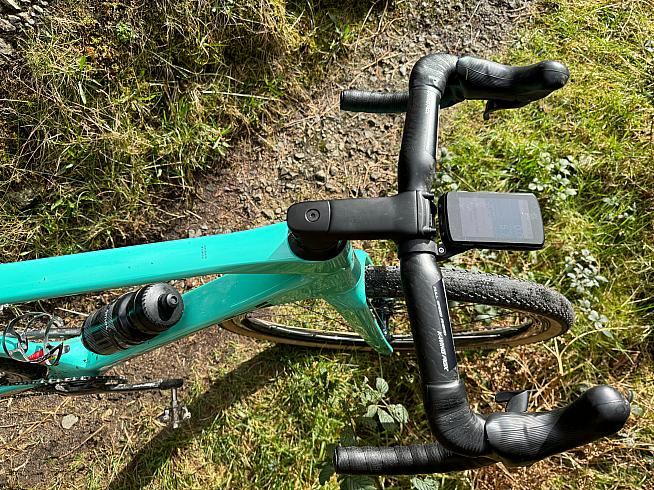
Building the bike could almost justify a separate article in itself. I was pretty nervous about setting up the internal routing, but it turned out to be less challenging than I feared, just more time consuming.
One key thing is you need to get the cable and brake housing lengths spot on, because there's very little wiggle room - literally, in terms of feeding the cable housing through the bars, but also because the cables run directly through the stem and into the frame, the only margin for error is whatever you can gain by curving the cable run slightly in the downtube. Perhaps a couple of cm is possible at best. Careful measurement is essential.
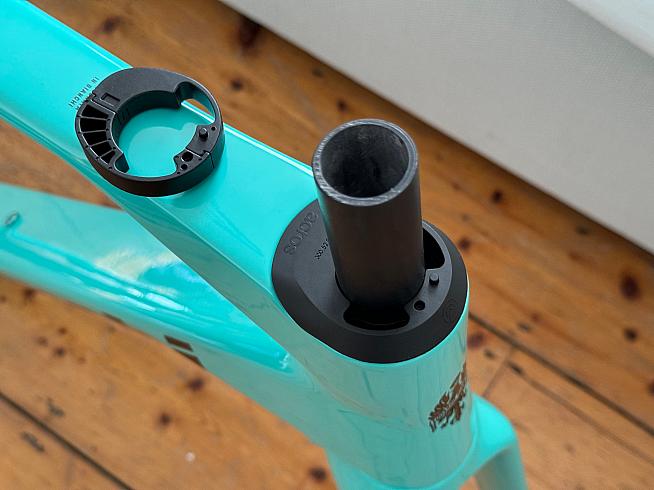
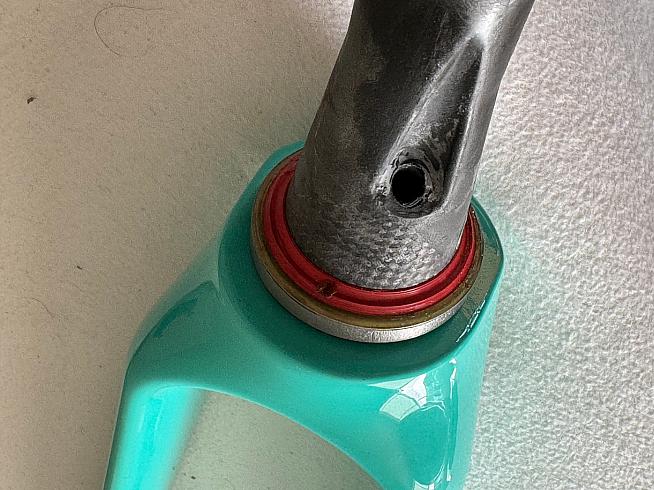
You also ideally want to get your position dialled in before you start setting the bike up, because it's not something you'll be in a rush to repeat after you've done it once. I used my current bike, a Cannondale Topstone, as a size guide and removed a couple of spacers and cut down the steerer tube on the Impulso before beginning the rebuild.
That integrated front end aside, it's actually a fairly straightforward frame to work with. There's a large access hatch in the bottom bracket shell for fishing cables through, and a removeable cover plate with guides for front and rear derailleur cables. My bike came with foam liners to prevent any rattling of cable housing in the downtube - I don't know if that's factory standard or added by the mechanics at the retailer, Start Fitness, but it's a nice touch.
The build gives a chance to appreciate the details of the frame at leisure - and it really is an eye-pleaser. Bianchi claim the Impulso frame has been designed with aerodynamics in mind, and details like the recessed head tube where it meets the fork crown speak to this; even the chunky, squared off downtube is so massive that it effectively shields your bidon from the wind.
There's a sculptural quality to the front end in particular, where the top tube and downtube converge to meet; at the back meanwhile, classicists will appreciate the absence of dropped seat stays which lends the frame a more traditional look.
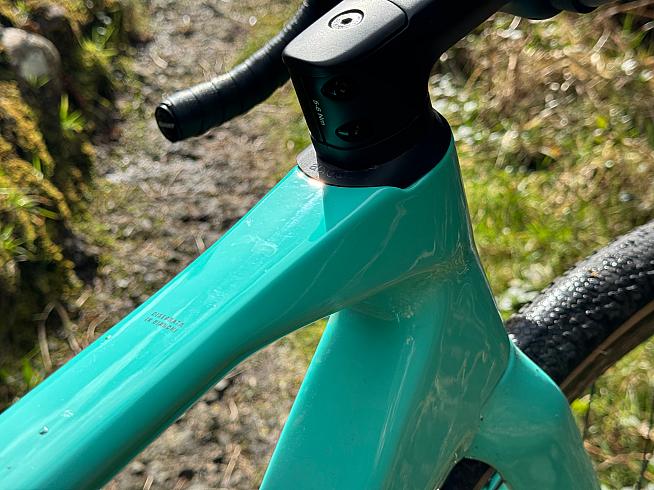
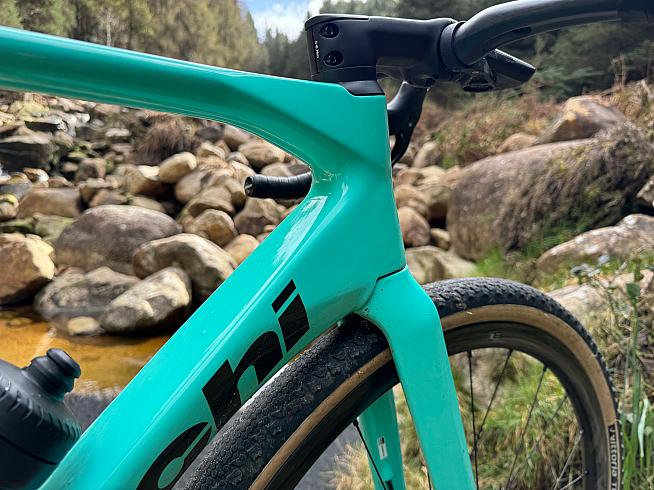
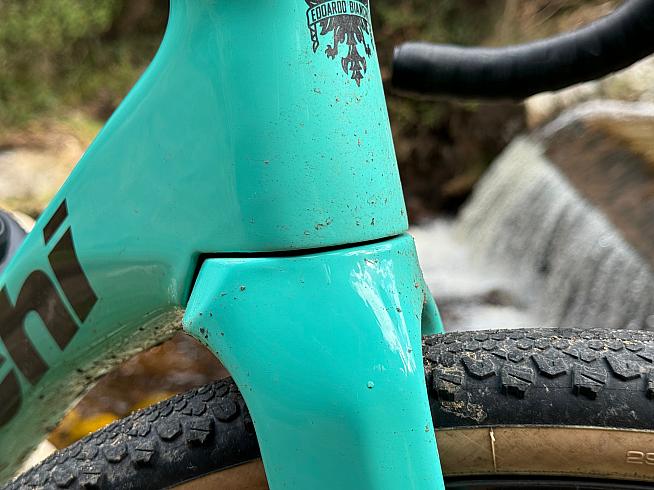
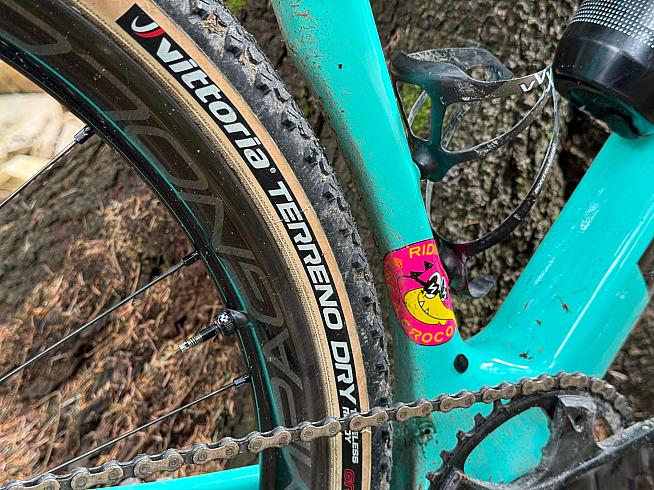
The seatpost bolt is neatly concealed under a rubber cover. I'm a fan of this, it's a more practical design than some bikes where the exposed bolt is situated behind the seatpost, right in the firing line of grit and muck thrown up by the rear tyre.
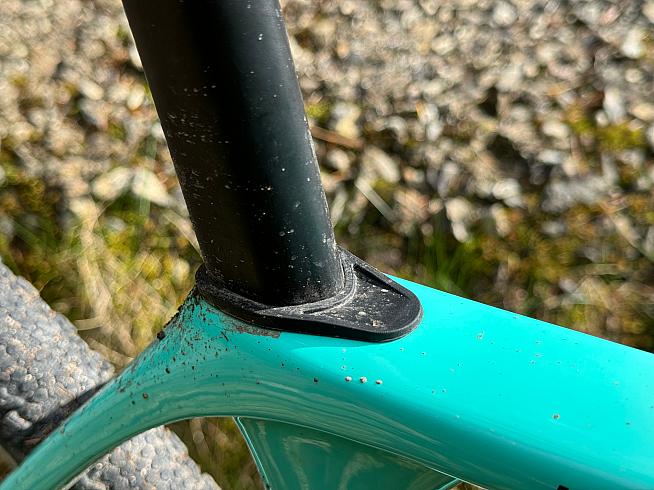
In other respects Bianchi have mostly stuck to current industry standards: flat mount disc brakes front and rear, a BB86 pressfit bottom bracket. One exception is the headset, Bianchi have gone with the ICR integrated system from Acros. This sees the cables and brake hose routed either side of the steerer tube, rather than in front of it as seems to be more common.
It's a perfectly practical design and installation was not complicated - the spacers click into place like a nice 3D jigsaw - but it does mean you might be limited in your choice of aftermarket stems or integrated bar/stem combos. That's one reason I stuck with the stock stem, which, although feeling overbuilt was the right length. (Of course, since the cables are routed through the centre of the headset bearings you'll need to set aside a couple of hours of your or a bike shop's time when it comes to renewing the headset - but that's an issue with fully internal routed bikes in general, not just Bianchi.)
One gripe is the lack of a plug or blanking plate to cover the two bolt holes for the front derailleur hanger if running a single chainring; I could have kept the redundant hanger in situ I suppose but it's liable to collect mud. In the end I covered the mount point with a bright pink Rapha EF Education First sticker - an interim solution until i come up with something more discreet.
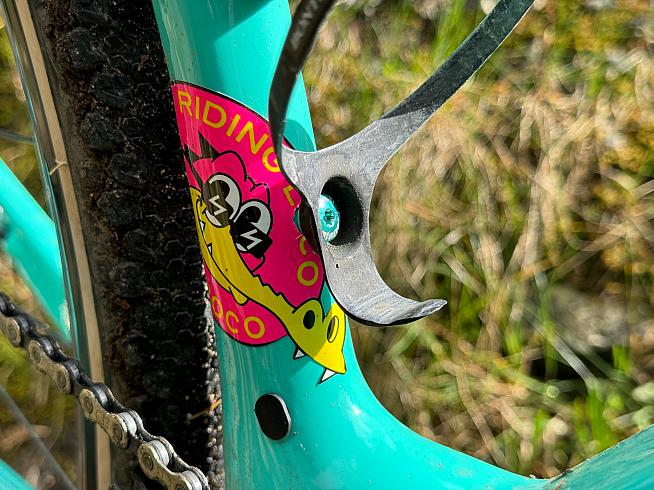
After several sessions of late-night fettling it was finally time for a test spin.
Bianchi are not kidding when they say this bike is optimised for racing: the Impulso sports a stiff, muscular chassis that's hungry for speed, and frankly it doesn't massively care about your comfort along the way. I started out on fast-rolling 700x40 Continental Terra Speed tyres, and the Impulso belted along smooth gravel trails and picked a path up snaking MTB trails with aplomb.
Handling is sharp and responsive, the Impulso flicks from side to side around obstacles with the lightest touch - the nimble feeling aided no doubt by the loss of some 1.5kg from the stock weight.

For the next couple of rides I swapped over to road tyres - 700x32 Continental GP5000s TR (set up tubeless of course) - and in this guise I weighed the full bike including pedals at 7.4kg.
That's firmly in road bike territory these days, and in slick tyre mode the Impulso, as you might expect, does an excellent impersonation of a road bike. It's light, it's stiff - and sure, the boxy downtube is not quite as aero as a dedicated race bike, but the Impulso is more than capable of holding its own on a sportive or pacy club run.
It's not an overly harsh feeling bike either, by any stretch. I ticked off a 100km road ride, three and a half hours non-stop, and felt fresh as I could hope given the chilly March conditions.
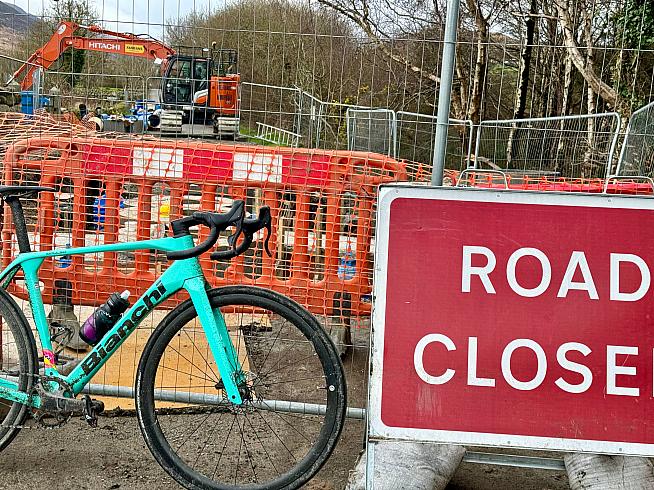
I used to ride an Infinito CV, which featured Bianchi's Countervail technology said to reduce vibrations and hence fatigue. I never quite managed to pin down whether that was genuinely effective or just placebo; in any case, the new Impulso doesn't have Countervail, but it arguably has something better: clearance for wide tyres.
Just how wide though, is the question?
Bianchi say 42mm. While my 32mm road tyres certainly helped take the sting out of our decrepit local roads, I was keen to push the clearance to the limit: wider rubber is better when the going gets tough, both from a comfort perspective and for traction.
Going by the looks of the 700x32 tyres I reckoned it might be possible to squeeze in something a little wider than Bianchi's specified max. I had a pair of Vittoria Terreno Dry in 700x47 packed away, which I'd fitted last summer to ride the South Downs Way, and decided to give them a try on the Impulso.
Surprisingly enough, they fitted. Clearance was close, especially around the chainstays near the bottom bracket, but there's at least a couple of mm left to play with. In dryish conditions, and with a relatively low-profile tyre like the Terreno Dry I think you'd be fine.
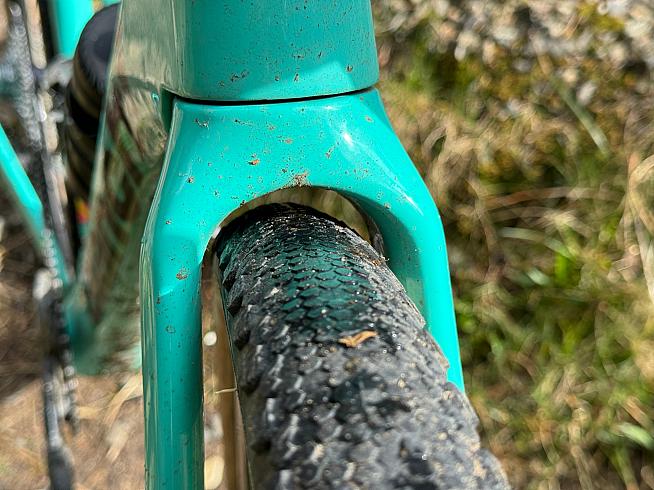
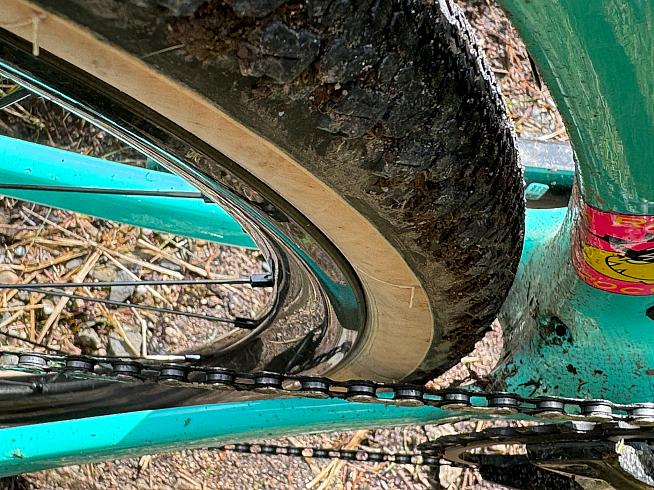
It helps too that the frame is so stiff: granted I'm not the biggest or strongest rider but even leaning my full weight on one pedal I couldn't make the chainstays flex quite enough to bring rubber into contact with paint.
Before you run off to order a 47mm tyre, there is one important caveat: the Terreno comes up narrow. I measured the actual width at just about 45mm when fitted to Campagnolo Levante wheels (25mm internal width).
Even so, the possibility of running a 45mm tyre should bring the Impulso into the thinking of a considerably bigger swathe of potential buyers.
Now, fitted with chunkier rubber, how did the Impulso handle?
I took it first for a quick out-and-back along some local forest trails. Flooding late last year followed by a persistently wet winter has left large water channels gouged out of the gravel path; the worst of it has now been patched up by the Forestry Service using a much coarser grade of gravel - more like small rocks really - making for an ideal test track.
The heavier tyres took a smidge more effort to get rolling, but once you're trucking it's hard to wipe the smile off your face: the Impulso rips along with irrepressible vigour, and that added cushioning just puts a little extra bounce in your step.
And bounce is the word: I got a timely reminder to drop the tyre pressure a couple of notches as the Impulso's tight rear end skittered and jolted over the rougher sections of trail.
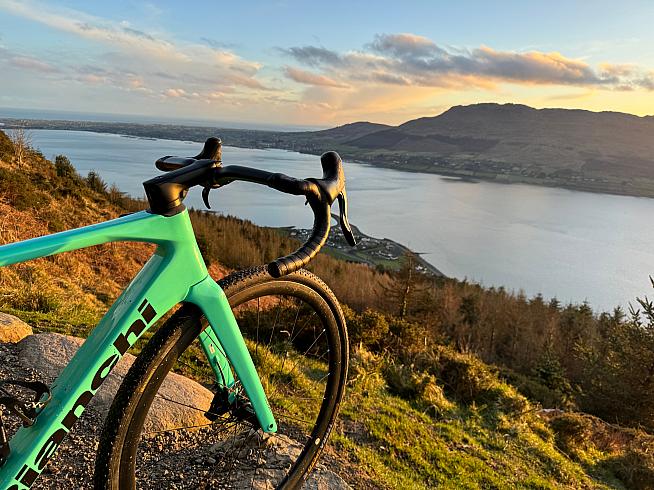
Compared with the Topstone it's a much bumpier, or maybe I should say livelier, affair. That's possibly an unfair comparison, in that I've been running the Topstone on 650x57 Vittoria Mezcals - basically mountain bike tyres - over winter, but the Kingpin rear suspension on Cannondale's adventure gravel bike does work: it's one of those things you maybe don't fully appreciate until you don't have it.
I won't turn this into a lengthy comparison of the two bikes here - I've not spent long enough with the Impulso to do it justice, for a start. What I can say is that on early impressions, Bianchi have produced a very appealing gravel race bike here.
Straight out of the box it's well specced, reasonably priced and there's no real need to upgrade anything - although the frameset will absolutely do full justice to lighter wheels, a 1x groupset or whatever you choose.
Incidentally, with the Levante wheels, Terreno Dry tyres and spd pedals I weighed the bike at 8.2kg. I know weight isn't everything, but every little helps on a steep gravel climb. If you're tempted by the Impulso, you don't need to fork out for the Pro or RC model to see an eight on the scales.
Despite that relatively low weight, stability on fast descents is superb; the Impulso holds its line in the face of crosswinds and gravel traps alike, perhaps in part down to the slightly longer wheelbase (1025mm) and shorter stem, and yet feels lively and responsive - a reassuring combo when you're in the driving seat.
When the trails turn upwards, the Impulso is a pleasure to climb with: here the frame's stiffness pays off, and it feels markedly more efficient with your effort than the Topstone.
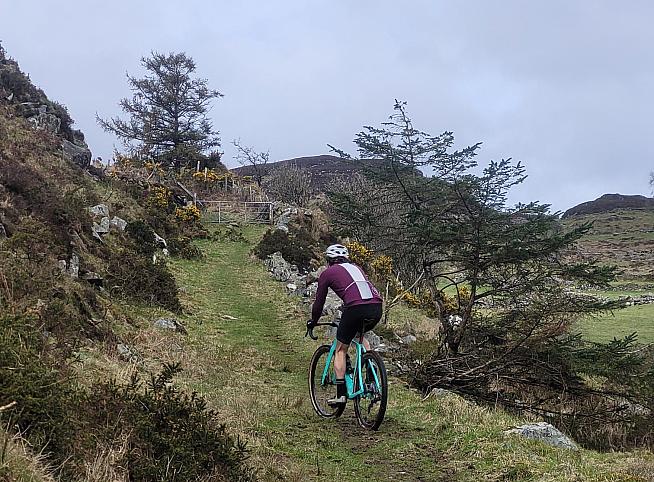
I get why Bianchi have specced 2x12 gearing across the Impulso range, and the closer jumps between gears may be an advantage for racing on relatively flat parcours. But there are advantages to a 1x setup too, and in my experience with Campagnolo's 13-speed Ekar group you'll seldom find yourself hunting for that Goldilocks gear ratio.
While the Impulso does clearly fall into the gravel race category rather than adventure - you can tell that just by looking at it - I think it is a strong contender for the mythical "one bike" to serve all purposes, if your use case is a mix of roads and light to medium gravel.
I could easily imagine using the Impulso as a road bike for sportives and audax, then swapping in the gravel wheels for off-road events. It has one advantage over the Topstone too, which is a much larger main triangle - you'd have no trouble fitting a full-size frame bag in there if you decided to do a bit of touring or longer events.
On that note: could the designers have made use of the boxy downtube to include a tool storage hatch, as in the Specialized Diverge or the new Canyon Grail? It seems a missed trick.
Still, bikepacking is evidently not the Impulso's raison d'être, pretty as it will look streaked in dust on the instagram shots. Look out for it instead at the next Glorious Gravel event, or perhaps Dirty Reiver or another of the UK's and Ireland's ever expanding calendar of gravel races - or, indeed, look for it under Nico Roche, the former WorldTour pro who now races gravel under Bianchi's sponsorship.
An impulse buy, yes: but so far I'm sold on the new Impulso.
It's fast, it's focused and it's a lot of fun to ride. Don't come expecting a squishy armchair of a bike, this isn't it; but for edge-of-your-seat thrills booting around the trails full pelt, the Impulso will put a grin on your face - and quickly.
Bianchi Impulso Comp, £2,649 - www.bianchi.com
Pros
- Excellent frameset and good spec at a reasonable price
- Stiff, fast handling, race-worthy chassis
- Will do double duty as a road bike
- Will fit 700x45mm tyres (wider than specified)
Cons
- Internal cables make maintenance a hassle and plane travel will require a large case
- Would be nice to see a plug/cover included for the front mech mount if running 1x
- Stash box in downtube would offer a neat way to carry spares, even for racers
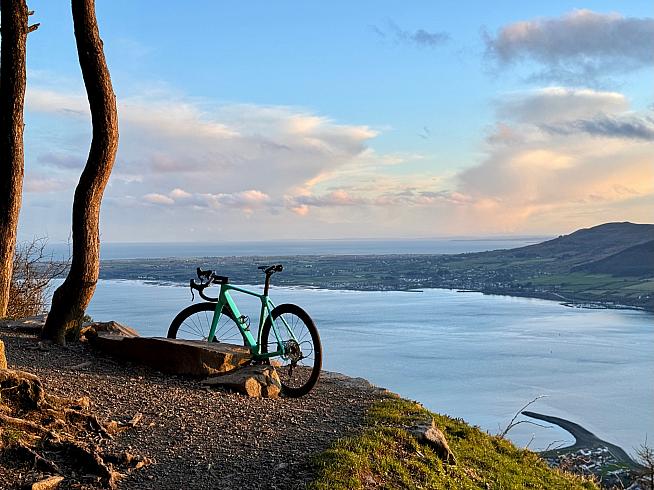
0 Comments





